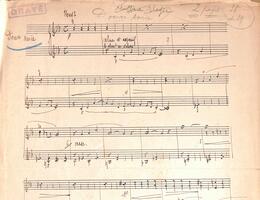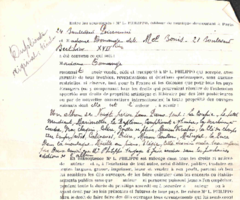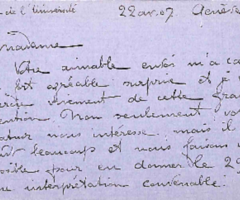Album pour les tout-petits
La toupie ; Le petit mendiant ; Marionnettes ; Le baptême ; Compliment à grand-mère ; La machine à coudre ; Gros chagrin ; Colère ; Gouttes de pluie ; Monsieur Vieuxbois ; La clef des champs ; Au temps jadis ; Câlineries ; Prière ; Miaou-ronron ; Madrigal ; La puce ; Dans la montagne ; Douce amie ; Mireille au piano.
Published after Scènes enfantines (1912), Album pour les tout-petits, Mel Bonis’s second set of piano pieces written for beginners, appears to have been her greatest commercial success. However, she reaped none of the financial benefits herself: the album was published by Poulalion in 1913, shortly before the latter ceased activity, and in order to ensure its continued publication by Philippo she was obliged give up the rights. At the age of fifty-five, having recently become a grandmother, she decided to devote her skills to making early piano lessons more pleasurable. At a time when it was considered that a child’s first contact with the instrument should be made through a series of purely technical exercises, she produced an attractively illustrated set of twenty pieces bearing amusing titles and intended to enable children to learn quite painlessly, through enjoyment. Each of the pieces has a specific pedagogical focus: dynamics, rhythm, hand movements, polyphony, and so on. In February 1914 the Swiss pedagogue Marcelle Cheridjian wrote to the composer: “Your petites pièces are quite simply adorable! From a pedagogical viewpoint, I find them perfect, possibly because they correspond to my own understanding of how the piano should be taught to the very young. I believe that above all they should be entertained [...].” When Philippo took over the collection from Poulalion, the penultimate piece, Élégie, was replaced by Douce amie. On the strength of the success of this album Mel Bonis returned to composing for children after the Second World War, producing amongst others Dix-sept Pièces enfantines (1926) and Miocheries (1928).





